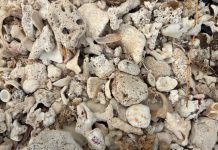Booking a magical glimpse inside Etnia Nativa
Article by Etnia Nativa call us 592 2702 and book your experience!
Each week, Etnia Nativa presents a new episode about cultural heritage and, during this, shares a bit of the history of Santa Cruz’s district. Until today, Santa Cruz and Noord have brought together a large number of the descendants of Aruba’s native population.
At the beginning of the 16th century, one of the few indigenous monarchs known as Caciques managed to negotiate a commercial treaty with the Spaniards and make possible the establishment of our island. He was the legendary Manaure, chief of the southwestern Caribbean and northwestern main land areas. These were times of prosperous commercial relations with the old continent. The prosperity of the region and its close relationship with the opposite shore caused the governor, Juan Martín de Ampies, to frequently visit Aruba.

However it was common to kidnap native Indians and sell them as captives to merchants from Santo Domingo, among whom were relatives of Manaure. It happened to be that Governor Juan de Ampies had rescued a good number of these indigenous people and all of Manaure’s relatives who were taken from Aruba. In gratitude, both parties signed the first alliance, followed by the founding in 1527 of the city of Santa Ana de Coro in Venezuela.
Because of the friendly relationship that surged between Manaure and Juan de Ampies by returning the Cacique’s family to Aruba and the main land, Manaure promised that he himself and his entire nation would convert to the Catholic faith. Once the agreement was signed, the Spaniards went to look for a large wooden cross they had on the ship. It cannot be determined whether Juan de Ampies fulfilled the condition of baptizing the Indians before transporting them from the mainland to the island. However, it is easy to deduce that Aruba being part of the domain of Manaure means that he is the one who brought Christianity to our island together with the Spaniards.
The Spanish method of conversion was the same in Aruba as in other parts of the Americas. The priests who accompanied the first explorers preferred converted Indians for the trip.
On our island, it was easy to find a converted Indian since many of our natives belonged to the same tribal community on the opposite continental shore.
With the approval of Manaure, the holy cross was taken to a place located between the main populated areas, Piedra Plat, Noord, and Savaneta. The sinking of the holy cross gave rise to the birth of the town of the same name, known today as Santa Cruz.

Tradition has it that the day after this event, one of the company’s priests read the Holy Mass for the first time in that place, and that same day, the first child was baptized.
It may not be possible to verify the details of the conversion of the natives of Aruba to the Catholic faith, but the oral tradition recorded by Dutch Father Jansen is correct in respects to the course of events as well as to the names involved.
It was in 1580 when Juan Manuel Martínez de Manzanillo O.P. was proclaimed bishop of Venezuela, the province of Caracas, and the islands of Aruba, Bonaire, and Curacao, and in 1593, he visited Aruba for the sacrament of confirmation. This indicates that the conversion had already taken place before this period. Spanish priests continued to come regularly to Aruba to carry out ordinary missionary work as well as to give instructions in Christianity to those already baptized before their confirmation.
Upon the arrival of the Dutch in 1536, a large percentage of Aruba’s population was Catholic and received regular visits from priests from the main land. However, until that moment, there was no regular church building, and mass was held close to many of the island’s big rock formations.
The Dutch occupation prohibited visits by priests from the mainland and subsequently instituted a ban on the Roman Catholic religion.
Overall, a combination of Spanish and Dutch influence marked the history of religious conversion in Aruba, along with the persistence of Catholic priests who maintained contact with the local population despite official prohibitions.
If you are interested in learning all about the true identity of Aruba, book your visit to Etnia Nativa, home of Anthony, our chief cultural columnist, who guides and lectures to unveil the most interesting stories about the island. Etnia Nativa sets itself apart from the rest as a hidden gem by offering a personal native touch and providing its visitors with the opportunity to enjoy a diverse array of artworks, objects, artifacts, dissected animals, plants, colonial furniture, unique old photos, etc. while diving to the navel of Aruba.
Book your visit: Whats App +297 592 2702 etnianativa03@gmail.com
















